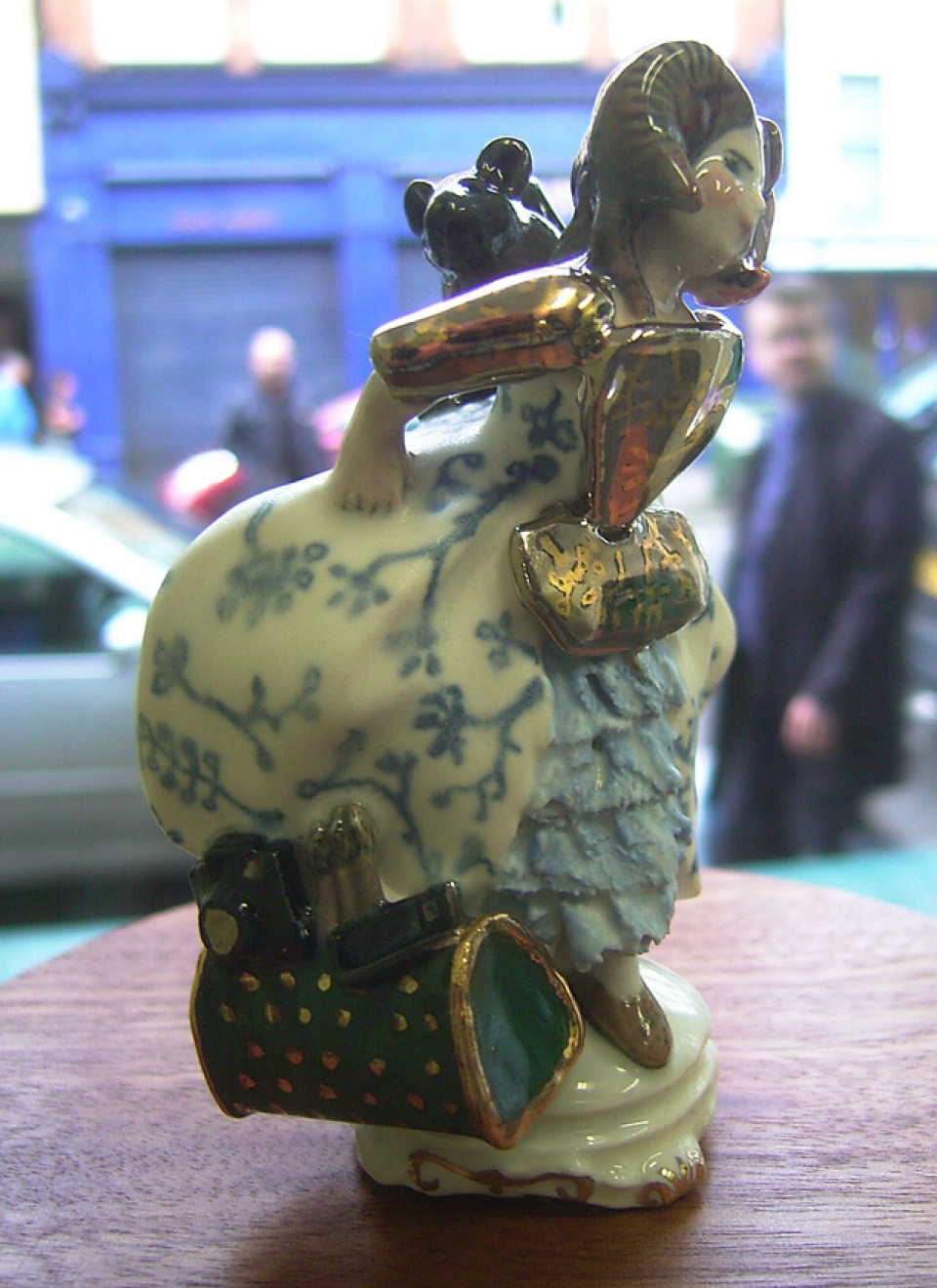
Opening hours
Wed- Fri 1-5pm, Sat 11am- 3pm
I can’t go on. I’ll go on
Part of Culture Night
Ursula Burke
Ends 24 September 2011
In ‘I can’t go on. I’ll go on.’, the artist Ursula Burke tries to promote a re-reading of contemporary representations of Ireland and Irishness. Her work is involved in provoking a series of questions and challenging representations that trigger multiple and competing representational imperatives. For this exhibition, she has created as series of porcelain sculptures and embroideries that offers wry, provocative and sometimes humorous representations drawn from a matrix of socio-political concerns.
Failte
The final lines of Samuel Beckett’s 1953 novel, The Unnameable, strangely presages the modern and late modern anxiety that has come to typify contemporary Ireland. It can be argued that the phrase, ‘I can’t go on. I’ll go on.’ serves as a pre-emptory witness and warning to the phenomenon that was to become the field of ‘Identity’.
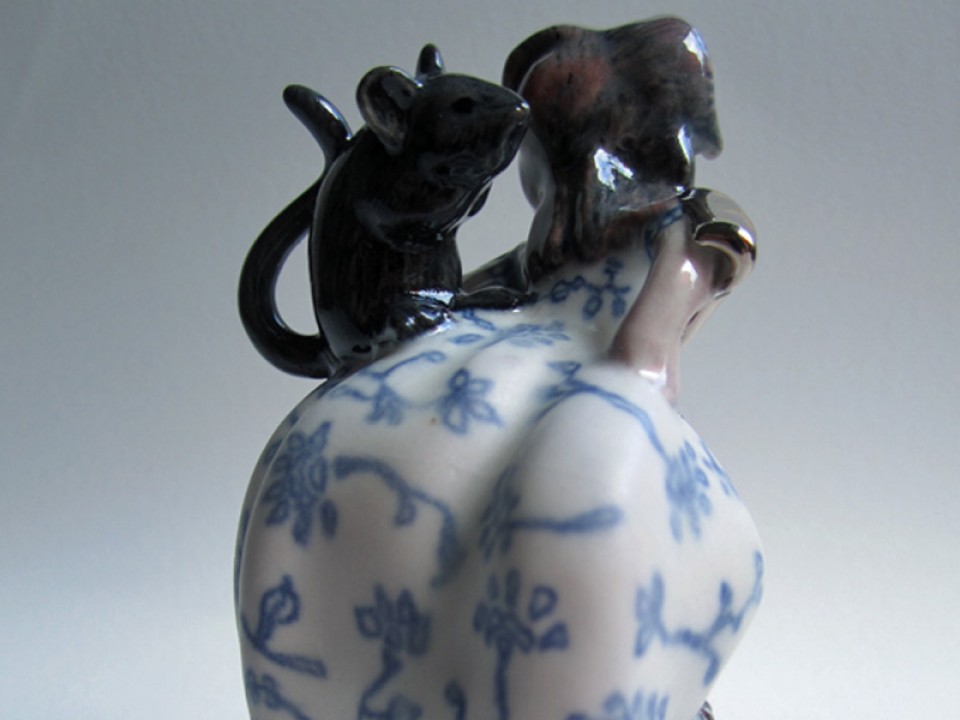
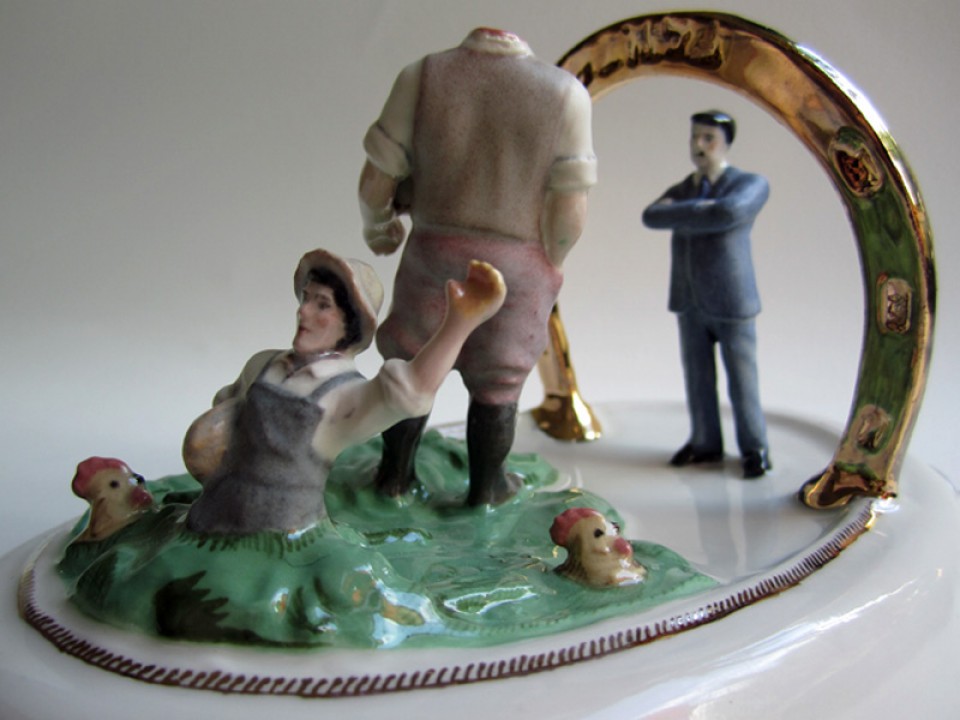
The phenomenon of identity construction in the field of Sociology has reached its zenith in the last fifty years. Historically, identity construction within the island of Ireland was something that one was born into – it happened at the same time as the moment of birth. Irish Cultural characteristics and sense of community were passed on and understood as being constitutive of being ‘Irish’. However, the Ireland of the twenty first century has been witness to a burgeoning growth of
The Burden
individualism in society. Irish identity is no longer articulated through the community or the Church but through consumer choices. Where once social and religious capital was sought through observations of cultural characteristics and catholic customs, now a different kind of social and symbolic capital is given primacy through the kind of jobs we choose, the car we drive, the places we holiday and the restaurants we eat in.
On the whole, Irish identity is now less concerned with religious, political or gendered classifications of being: identity is an act of ‘becoming’ that is played out again and again. Without any difficulty, the internet facilitates the purchase of off the peg identities carried out as a private individual act with great ease and speed. Has this given rise to a cultural turn in which community and tradition are no longer the vestige of the Portrait of an Artist, Irish individual?

Whereas historical myths of cultural nationalism have succeeded in reinforcing one sided, mono-cultural versions of a kind of Ireland, contemporary representations of an individualized, reflexive and atomized society on the other hand are something very different. Values such as materialism, isolationism, exclusion and lack of dissent are identified as characterizing life in Ireland. Much of what passed for the less appealing and negative social consequences of the economic boom had been glossed over in the dewey haze of the ‘Celtic Tiger’ years. However, as the fog is slowly lifting, what is being unveiled is an economic crisis in the form of an ongoing Recession, plummeting housing prices and repossessions, rapid unemployment and rising Portrait of an Artist, detail levels of emigration, the exposure of child sex abuse revelations and cover up by the Catholic Church and clergy in 2009/10 and an apparent re-resurgence in terrorist activity in Northern Ireland. Does this bring the fissures, contradictions and collisions in Irish cultural economic orthodoxy into sharper focus? Are the apparent rising levels of insecurity and disillusionment of the Irish public just another expression of an individualized society? ‘Risks and contradictions go on being socially produced; it is just the duty and the necessity to cope with them which are being individualized’ - Zygmunt Bauman. (2000). Liquid Modernity. Polity Press, 34.
To read a review by Angela Darby about the project, see Aesthetica magazine blog.
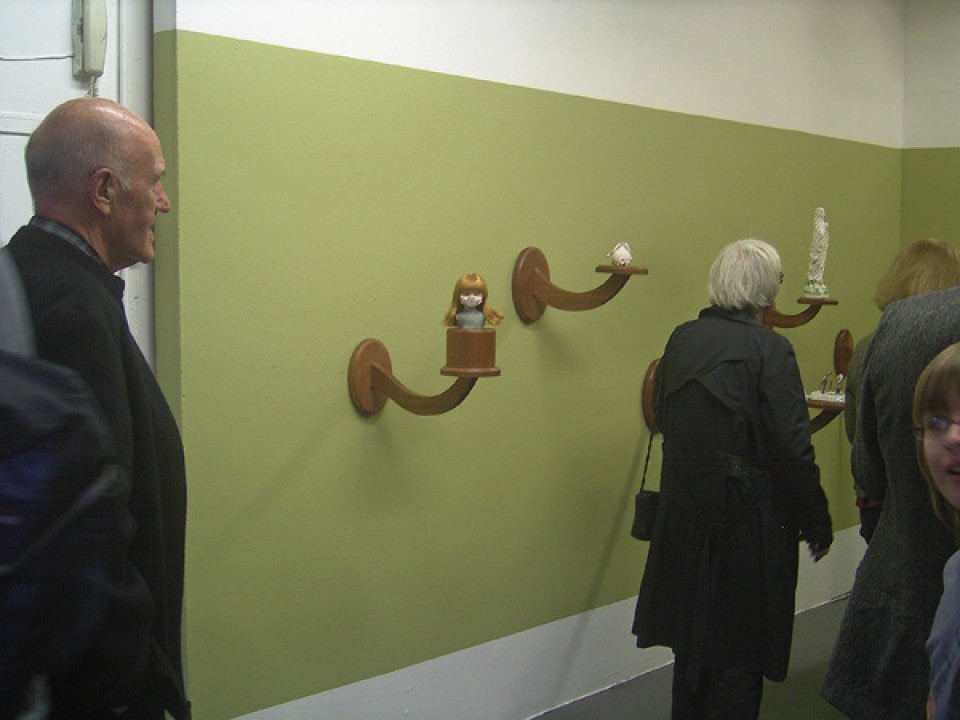
Installation view
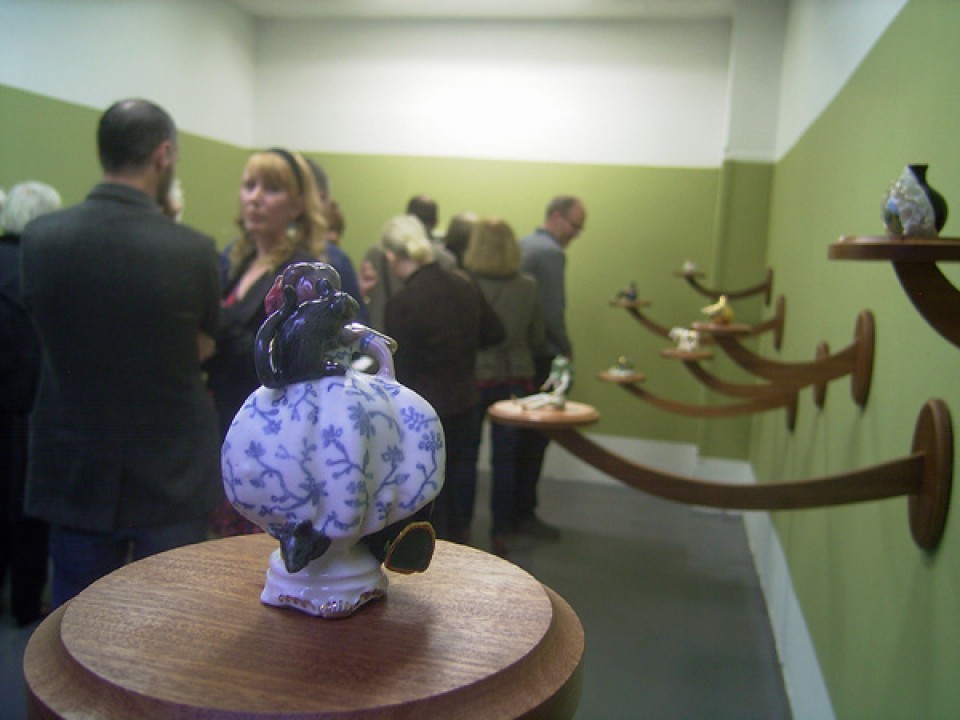
Installation view
Ursula Burke: Work process
My work is created using a Porcelain Slip Casting Process. I find objects that interest me from various sources such as Charity Shops, Toy Shops, Religious Shops, Irish Tourist Shops, Ebay, etc, and from these I make a plaster mould. The Porcelain Slip is then poured into the mould, pouring out any excess leaving a hollow shell which then dries. From this I begin to build elements from several casts onto a base cast, using the Porcelain Slip as a form of glue. When I am happy with the piece I then bisque fire it. After that, I hand paint colour and detail using a range of under glaze colours and pencils. The piece is then fired again to harden the under glaze on. Next I paint on either or both a gloss and matt glaze and fire again. Finally I paint either or both, gold and aluminum luster.
For more information on slip casting see.

